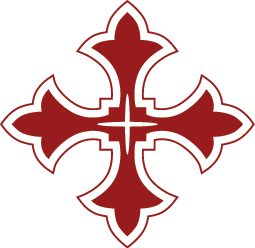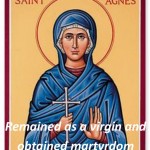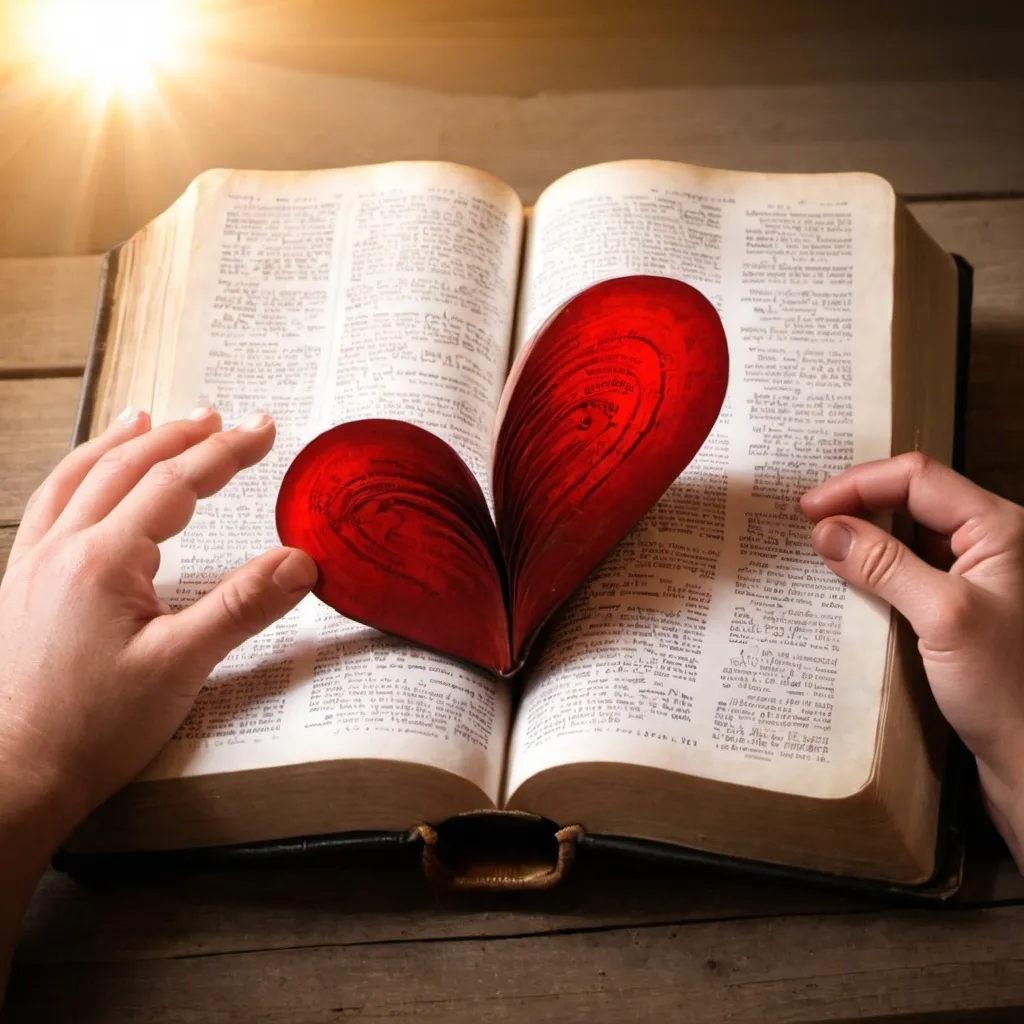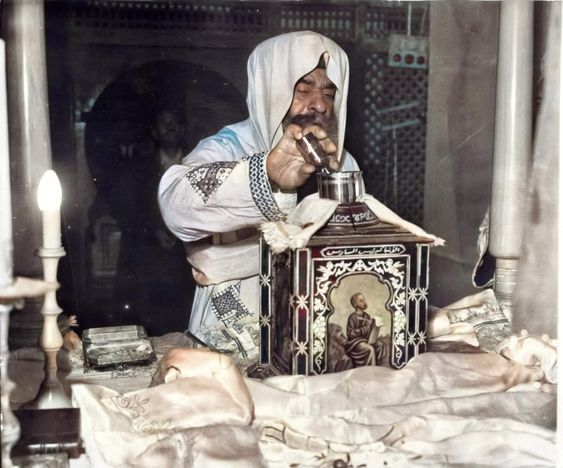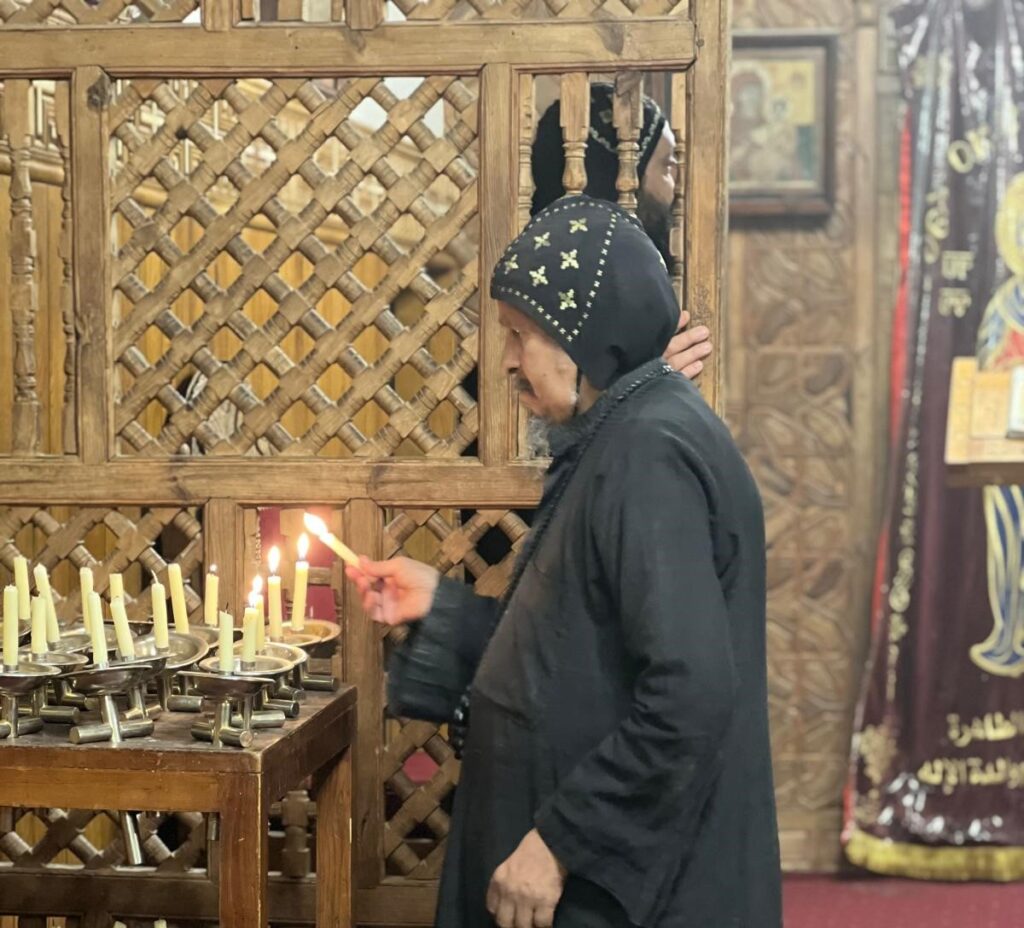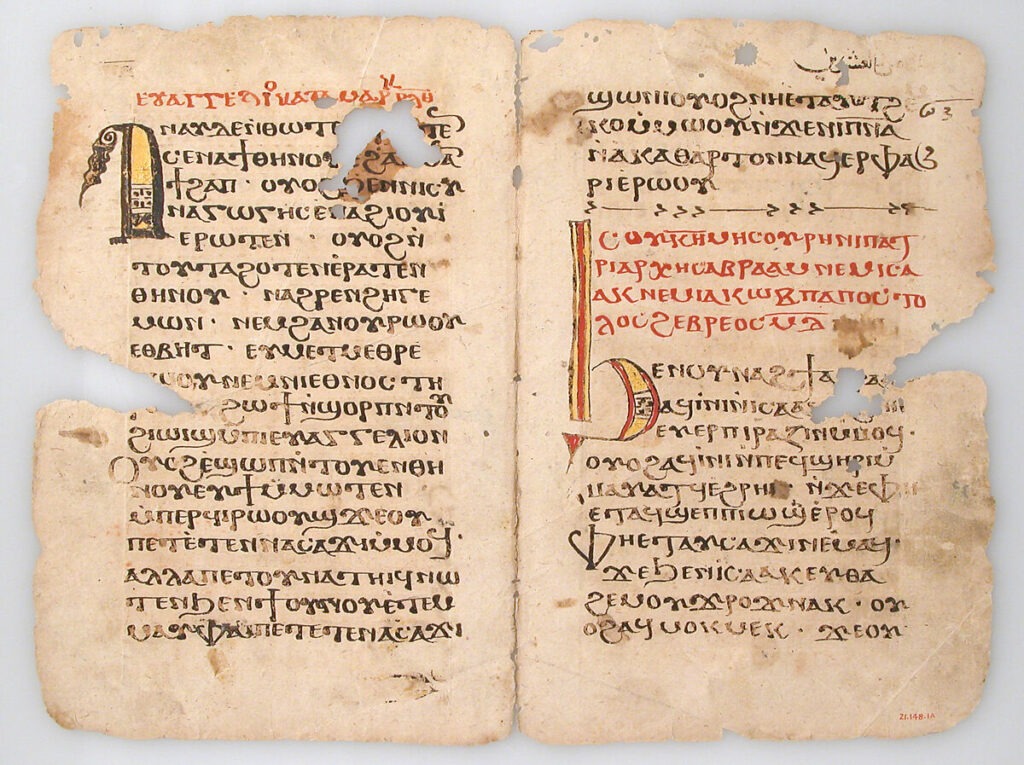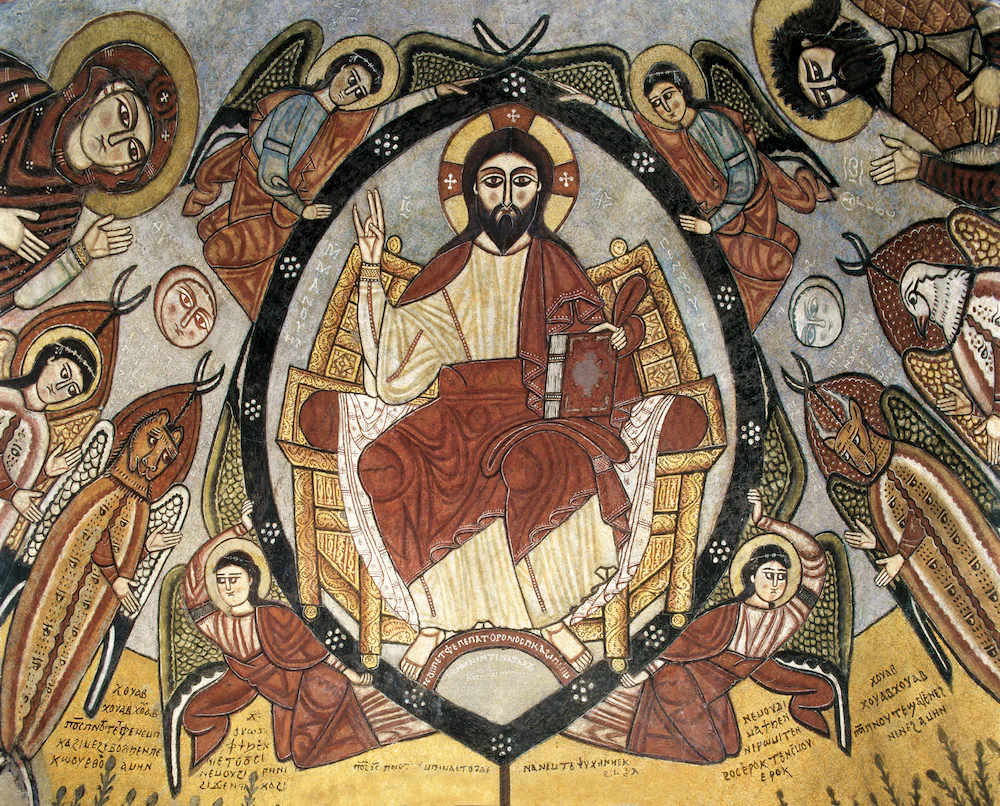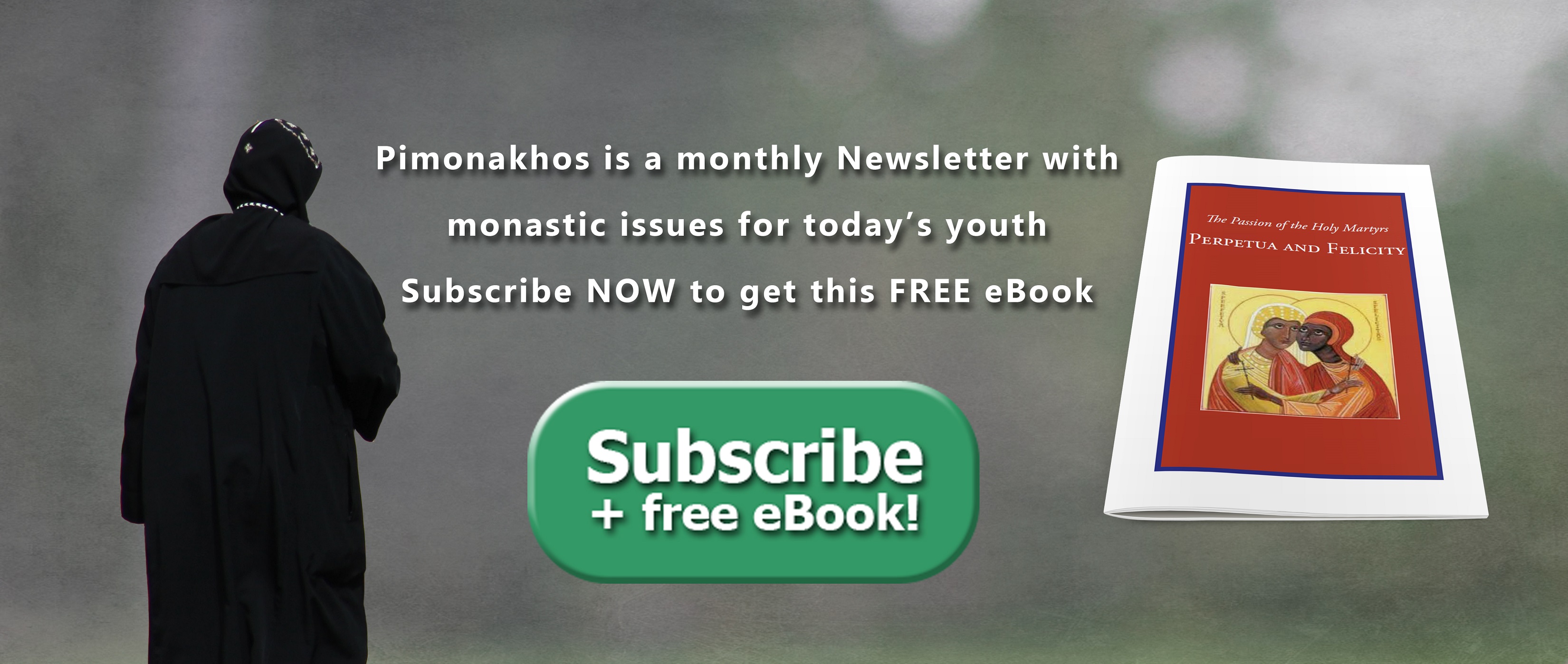Enacted assimilation of the text, points us beyond the mind and heart to consider another dimension of monastic prayer, the use of the body. We know from all of the monastic literary sources that bodily postures and gestures were integral to the practice of prayer. The typical posture was standing, with kneeling or prostration regularly …
Enacted assimilation of the text, points us beyond the mind and heart to consider another dimension of monastic prayer, the use of the body. We know from all of the monastic literary sources that bodily postures and gestures were integral to the practice of prayer. The typical posture was standing, with kneeling or prostration regularly practiced to emphasize humility, penance, and adoration. The typical gesture was to pray with outstretched hands, and to make frequent use of the Sign of the Cross, traced simply on forehead, lips or breast rather than in the later form of a larger cross made by touching forehead, breast, and shoulders.
In these practices, Egyptian monastics simply followed the standard Christian custom of the early Church as described by Origen and other writers. Everyone used these gestures. The Pachomian communal practice described earlier had its individual counterpart in John of Gaza’s summary of Scetic practice handed on to monks in Gaza. Anyone familiar with later Byzantine monasticism or, indeed, cont emporary monasticism in the eastern Christian churches, knows the importance attached to prostrations. Whereas the early monastic traditions reckoned the number of text plus response units by calling them simply “prayers,” later traditions used another way to describe spiritual practice by referring to the number of prostrations (of course accompanied by prayers) to be done in the course of a day. The intensity of monastic practice has been underscored by recent work at St Stephen’s basilica in Jerusalem (the church at École Biblique). Although the burial vaults at the basilica date back to the Iron Age, they were reused by monks associated with the church and monastery built in the fifth century by the Empress Eudocia to commemorate the martyrdom of Saint Stephen alleged to have occurred on that spot. A unique collection of thousands of monastic bones was preserved in these vaults and has recently been analyzed by a team from the University of Notre Dame. The most surprising feature of the skeletal remains of these well-nourished ascetic men, most of whom lived into their 40s and 50s, was evidence of severe arthritis of the lower limbs, explainable only by repeated genuflection and/or prostration over decades of monastic life.
emporary monasticism in the eastern Christian churches, knows the importance attached to prostrations. Whereas the early monastic traditions reckoned the number of text plus response units by calling them simply “prayers,” later traditions used another way to describe spiritual practice by referring to the number of prostrations (of course accompanied by prayers) to be done in the course of a day. The intensity of monastic practice has been underscored by recent work at St Stephen’s basilica in Jerusalem (the church at École Biblique). Although the burial vaults at the basilica date back to the Iron Age, they were reused by monks associated with the church and monastery built in the fifth century by the Empress Eudocia to commemorate the martyrdom of Saint Stephen alleged to have occurred on that spot. A unique collection of thousands of monastic bones was preserved in these vaults and has recently been analyzed by a team from the University of Notre Dame. The most surprising feature of the skeletal remains of these well-nourished ascetic men, most of whom lived into their 40s and 50s, was evidence of severe arthritis of the lower limbs, explainable only by repeated genuflection and/or prostration over decades of monastic life.
The athleticism of early Christian prayer cannot be over-emphasized in a modern western context like ours where prayer tends to be associated with stillness, sitting or kneeling, and closed eyes. Early monastics, like their Christian brothers and sisters, prayed with the whole body and typically with eyes open. Catechesis on prayer emphasizes the importance of raising the eyes to heaven as a sign of beseeching and confidence; Origen regarded this as part of the body’s iconic expression of the proper state of the soul at prayer. Archaeological evidence from Egypt suggests that the visual aid of a painted cross was standard in monastic cells.
This brings us to the issue of place. Though ascetics could pray anywhere (and if they were to pray always, they had to be able to pray anywhere), there were privileged places to pray. Extensive excavations of monastic cell complexes at Kellia in Egypt have suggested that even the oldest and simplest cells dating from the fifth century had a separate oratory, or prayer room. Manual labor with its accompanying gesture and periodic response would be done in another room or outdoors, but the canonical prayer of the hours twice a day and other devotions with accompanying gestures would have been done in the oratory. On the walls of these oratories, archaeologists have found painted crosses. Some are quite simple, others are more elaborately developed to appear as if they were fashioned from palm trees, or are ornamented with the geometric playfulness familiar from later Coptic art. One well-known example from a communal oratory dated to the seventh or eighth century superimposes on the standard cross a haloed figure of Christ in blessing. In the same room was found an inscription justifying and explaining the use in monologistic prayer of the name of Jesus, a valuable witness to the monastic origins of the tradition of the Jesus Prayer in eastern Christianity. On the eastern wall of the oratory a niche was typically carved into the wall to indicate orientation for prayer. Facing east to pray was another distinctive marker of early Christian prayer, typified most powerfully in the Vigil of Easter, when the catechumen turned west to renounce the dying sun of sin and then east to profess faith in the new life found in the Risen Christ.
Inscriptions are everywhere in the excavated cells of Kellia, and can be seen today in other ancient monastic complexes such as the Red Sea monasteries of Saint Paul and Saint Antony, and the White and Red Monasteries near Sohag. There are not only the formal inscriptions that one finds accompanying wall paintings in the monastic churches, but also the graffiti, the prayers, and requests for prayers, written by individual monks. The power of these simple, heartfelt messages is dramatically (and mysteriously) evident in one of the anonymous Apophthegmata about a monk who comes to the monastery at Sinai. Trained as a scribe, he finds in his cell a wooden tablet with this inscription: “Moses to Theodore: I am present, and I witness.” Each day he would look at it, and ask, “Where are you now, you who say ‘I am present and I witness’? In what world are you now? Where is the hand that wrote this?’. He became obsessed with the inscription, which became for him a constant memento mori. He wept continually, and despite being given scribal commissions and bundles of papyrus, he never wrote a thing except a brief note he would send back to his customers with their unused papyrus: “Pardon me my lords and brothers, for I have a little business with someone and because of that I did not have time to write for you.”
Join Us: Sign Up Today!
Tags:

